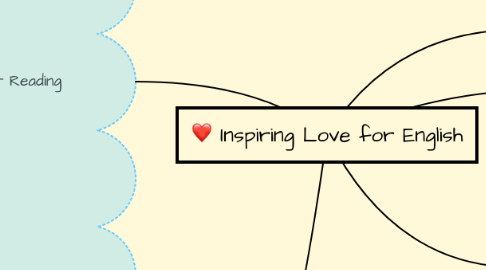
1. A love for Reading
1.1. Specific characteristics (guided by syllabus)] (Tier 2 issue)
1.1.1. Awareness of linguistic features
1.1.2. broader engagement vs specific genres
1.1.3. Reading for pleasure
1.1.4. Expansion of knowledge
1.1.5. Sustained reading
1.2. Basic Obstacles (Tier 1 issue)
1.2.1. No motivation
1.2.2. No interest
1.2.3. Lack of assessibility
1.3. Approaches
1.3.1. SCK
1.3.1.1. What happens in the reading process?
1.3.1.1.1. Why don't students like reading?
1.3.1.2. How are we positioning "reading" - as a means to exams performance?
1.3.2. Generating Interest
1.3.2.1. Pedagogical approaches
1.3.2.1.1. Role Modelling - Do students know that teachers are reading? How can teachers share their reading interests?
1.3.2.1.2. Teacher's ability to engage
1.3.2.1.3. LangLit
1.3.2.1.4. Using ICT to share interesting topics / articles
1.3.2.2. suitable materials (Tier 2)
1.3.2.2.1. PLT 2: Sourcing a wide variety of rich texts of different genres / types / topics
1.3.2.3. Student Survey / Reading Profiles (e.g. by NLB) [Give students what they want to read]
1.3.2.3.1. Teacher recommendations to students
1.3.2.3.2. Interest matching generation / selection of resources for use in class
1.3.2.4. De-linking reading from academic performance
1.3.2.4.1. Alternative Assessments, e.g. Authentic Problem Solving, Creative Expression Projects
1.3.2.5. Tapping into other subject areas
1.3.2.5.1. e.g. Interesting Science Articles
1.3.2.5.2. Contextualization: Discussing in depth a principle/issue/concept covered in a reading article in other subject lessons.

